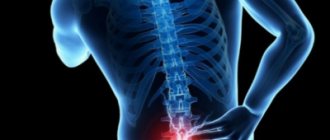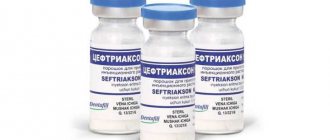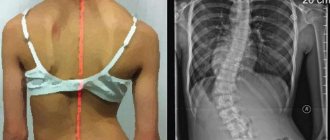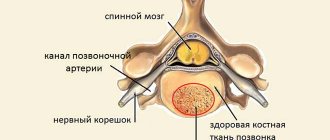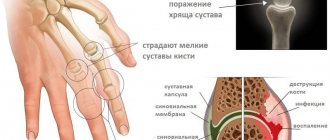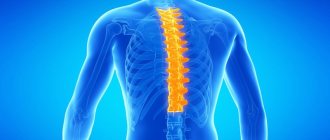Medicinal electrophoresis has several synonymous designations: galvanoion therapy, ionogalvanization, ionotherapy, iontophoresis, therapeutic iontophoresis. Electrophoresis works on the following principle - it affects the human body with direct current, and also affects the electrophoresis drug, which penetrates the surface of the skin and mucous membranes. The multifaceted and expanded use of medicinal electrophoresis guarantees a positive treatment result, but few physiotherapists can answer the question “how often can electrophoresis be done?” The effects that electrophoresis has on the human body:
- · Improving the overall protective reactivity of the body, thus increasing the protective capacity, which prevents the development of other pathological diseases;
- · Metabolic and trophic processes begin to actively intensify;
- · The body's immune system is mobilized, etc.
Electrophoresis is performed on both adults and children several months after birth. Accordingly, the indications for electrophoresis of a child and an adult may differ from each other due to differences in the anatomical and physiological characteristics of the body, as well as the difference in the medicine used. Electrophoresis and its effects, in comparison with other physiotherapeutic methods:
- · Only small doses of medications are used. Given this fact, the child needs electrophoresis immediately, as one of the first methods of treatment;
- · Formation of a subcutaneous depot, which has a direct impact on the duration of the procedure and the effect of the medicinal substance;
- Due to small doses of the administered drug, the development of allergic reactions in children
- reduced to a minimum percentage;
- · Absolutely safe procedure.
Electrophoresis allows drug ions to penetrate into the body in two ways - through the excretory ducts of the sweat and sebaceous superficial glands, as well as through the intercellular substance. The dose of electrophoresis drug that is delivered to the body is only 5-10 percent of the dose that is used for parenteral administration. Previously, large concentrations of drugs were used, but such treatment did not demonstrate better positive results. The movement of electric current in the human body is not linear. What does the passage of electric current depend on? The speed of current flow depends on the anatomical and structural relationships of the body's conductors. Good conductors are the membranes of nerve trunks, blood vessels, muscles, urine, lymph, cerebrospinal fluid, etc. Poor dielectrics are adipose tissue, tendons, nerve plexuses and bones. Structures that do not conduct electric current at all - nails, hair, etc. Electric current and substances penetrate better through moisturized skin than dry skin. Drug ions for electrophoresis penetrate to a small depth and immediately begin to form subcutaneous depots in the epidermis and dermis. In these depots, the medicine can be stored from several days to two weeks. Gradually, the drug ions begin to diffuse into the lymphatic and blood vessels by soaking through their walls. Thus, drugs for electrophoresis will be delivered to all organs and systems of the body. These simple features of electrophoresis provide its advantages in comparison with other therapeutic and preventive physiotherapeutic methods: · A pathological or inflammatory focus quickly degenerates, since a high concentration of the medicinal substance is created in the affected area; · The electric current itself has a desensitizing effect, and in combination with a small dose and concentration of the substance, practically no side effects have been observed during the entire period of use of electrophoresis in practice;
- · The prolonged effect of the drug is determined by the slow gradual flow of ions from the skin depot to the lesion;
- · Electrophoresis is a painless, non-invasive treatment method, as a result of which it protects the skin and
- mucous membranes from damage;
Articles on the topic: To whom and how can electrophoresis help?
Medicine for electrophoresis, features of solvents and use. It is better to use medicine for electrophoresis in ionized form, so the therapeutic effect will be achieved faster. In foreign clinics, electrophoresis is performed only if specialized medicinal gels are available. The desired drug or gel is applied to the surface of the working electrode pad, which has the same polarity as the ion to be administered. Medicine for electrophoresis in different cases has different polarity, the determination of which is not difficult, for example, ions of all metals have a positive charge and must be introduced from the anode, ions of metalloids (namely chlorine, bromine, iodine, etc.) and acidic residues must be introduced from the cathode, since during the dissociation period they receive a negative charge. Drugs such as local anesthetics, most groups of antibiotics, sulfonamides and alkaloids have a positive charge in solution. A drug for electrophoresis may differ in the complexity of its composition, and therefore its polarity is difficult to determine, and this can only be done with special studies. The solvent plays no less a role than medicinal substances in electrophoresis. For many drugs, the best solvent is distilled water; therefore, this is true for water-soluble drugs. Plain water has a high dielectric constant, which is why the drug for electrophoresis dissociates quickly and well. Also, water, compared to other alternative solvents, practically does not interfere with the electrogenic transfer of drugs.
The principle of operation of electrophoresis
Medications are transferred by an electric field to the lesion due to the occurrence of electrolytic dissociation under the influence of current, i.e., the disintegration of drugs into differently charged ions and their movement to the electrodes of the opposite pole through the organs and tissues of the human body. Approaching the opposite electrode, the ions undergo electrolysis, i.e. lose charge from their shell and become atoms with high physical and chemical activity. To neutralize their negative effects on the body, special fabric pads moistened with water are placed on the skin directly under the electrodes. When free atoms come into contact with an aqueous environment, acid accumulates under the anode, and alkali accumulates under the cathode, which, when diluted, do not harm the patient’s skin.
Physiotherapy for hip dysplasia and torticollis
These diseases are congenital and appear early, but with correct diagnosis and timely treatment they can be successfully cured in children even in infancy. Physiotherapy, in particular electrophoresis, plays an important role here.
Solutions with aminophylline are also used for exposure here, since disorders are associated, as a rule, with cartilage tissue, which is most affected by this drug.
Physiotherapy in combination with massage, physical therapy and special devices, used in accordance with the doctor’s prescription for a long time, gives excellent results, normalizing the condition and development of the child. Calcium supplements are also prescribed, often in combination with trental.
Therapeutic effects of electrophoresis
General: activation of immune, metabolic and physico-chemical processes.
Therapeutic effects depend on the dominant electrode at the time of the procedure.
Cathode (negative electrode):
- dilation of blood and lymphatic vessels;
- relaxation;
- normalization of metabolism;
- normalization of the functioning of the endocrine glands;
- improvement of cell metabolism;
- stimulation of the secretion of biologically active substances.
Anode (positive electrode):
- removal of excess fluid from the body;
- reduction of inflammatory processes;
- anesthesia;
- sedation
What you need to know about Trental?
The drug thins the blood, changes its chemical composition and dilates blood vessels. After taking it, the blood supply to the extremities increases and the energy metabolism of the cerebral cortex accelerates.
In children, the drug is prescribed for hip dysplasia and SVD (vegetative dystonia syndrome). It is also prescribed for cerebral palsy. The medicine is administered through a special method of precisely delivering the substance to the organ called “electrophoresis”.
Mothers often ask: what to do if a child accidentally ate Trental? In this case, you should immediately rinse your stomach and call an ambulance. Side effects observed in the child in this case: insomnia, headache, loss of appetite, allergic reaction.
Other features of the drug:
- Increases the elasticity of the walls of blood vessels, slightly expanding them. This has virtually no effect on the heart rate;
- Positively affects the tissues of the central nervous system, kidneys and limbs;
- Helps improve the quality of metabolic processes in the central nervous system;
- As a result of taking the medicine, the child's motor activity may increase. After taking the tablet, the effect of the medicine appears quite quickly.
In medicine, Trental for children under one year of age is used in conjunction with a method such as electrophoresis. This ensures high speed of delivery of the active substance and a long-lasting effect. The dosage is determined individually based on the results of examinations. Tablets are used extremely rarely. For this there must be serious evidence.
Carrying out the electrophoresis procedure
Before carrying out the procedure, it is necessary to make sure what ions of charge the selected solution dissociates into - if into positively charged ones (cations) - it should be placed under the anode, if into negative ones (anions) - under the cathode to create a line of movement of ions to the opposite charge.
To carry out electrophoresis, various techniques are used depending on the presence of the disease and the desired result.
Methods of carrying out the procedure can be divided into general and local, and also the areas of exposure to the electric field can be distinguished: percutaneous technique, cavity, bath and interstitial.
The location of the electrodes can be longitudinal (for superficial impact), transverse (for impact on deeper lesions) or segmental (for impact on certain parts of the spine).
During the procedure, 2 or more electrodes are used, one or more zones are involved.
The current strength is selected individually depending on the sensitivity of a particular person. During the procedure, it is advisable to gradually increase the current strength to prevent addiction, which may cause a decrease in the effectiveness of the procedure.
The procedure lasts from 10 to 40 minutes, the course of treatment includes from 5 to 20 procedures performed daily or every other day.
Electrophoresis for hypertonicity or hypotonicity
Hypertonicity is excessive tension of individual muscle groups. It can appear in a child from birth, and not after 2-3 months, as some parents believe. The reasons may vary, from illnesses suffered by the mother during pregnancy to consequences after a difficult birth. This is a rather dangerous condition that can subsequently lead to developmental delays, so treatment should begin as early as possible and strictly follow all doctor’s prescriptions.
To relieve tension from the muscles, normalize their blood supply and improve nerve conduction, electrophoresis with aminophylline is prescribed. Sometimes in combination with calcium. Other procedures in this case include paraffin baths and, of course, massage. Saturation of tissues with aminophylline improves blood circulation not only in muscles, but also in cartilage, and relieves spasms that impede normal blood flow.
Related articles: Osteochondrosis and electrophoresis
For hypotension, electrotherapy with aminophylline is combined with taking vitamins and other medications to strengthen the body. Massage is also used, but its purpose is somewhat different, not to relax, but to activate muscle contraction.
Features of drug electrophoresis
- ions of drugs are introduced through the ducts of the sweat and sebaceous glands of the skin;
- increasing the sensitivity of skin receptors to medical substances;
- complete preservation of the drugs’ pharmacological activity;
- uniform distribution of the drug in the cells and intercellular fluid of the body;
- depositing drugs from 1 to 15-20 days;
- pronounced therapeutic effect of drugs on the body at low doses;
- absence of side effects of pharmacological drugs, unlike other types of their administration;
- painlessness of drug administration;
- exposure of the drug directly to the area of the pathological substance, without exposing other organs and tissues;
- minimizing the possibility of allergic reactions to the administered medical substance;
- the possibility of introducing a combination of drugs;
- The location of medications on the electrodes depends on the charge of the ions.
https://youtu.be/bYWrQOl-5yQ
Advantages and disadvantages
The general advantages of electrophoresis are as follows:
- the drug is administered actively and purposefully, since only those drugs that have an ionic form in solution are selected for electrophoresis, and the drug accumulates under the skin;
- the drug acts for a long time, has a therapeutic effect several days and even weeks after the end of the course;
- the medicine can be administered specifically, that is, paravertebrally or deep into the musculo-ligamentous apparatus of the spine, if we are talking about protrusions and hernias;
- An important point is the almost complete absence of adverse reactions, because the medicine does not pass through the gastrointestinal tract, liver, and does not irritate the gastric mucosa. Quite often, medications for electrophoresis, which are used for protrusions and hernias, will be nicotinic acid and aminophylline, and in the case of electrophoresis, you do not have to worry about their usual side effects characteristic of oral use;
- electrophoresis differs favorably from injections in the method of drug delivery. After all, if there is a spasm of capillaries in the pathological focus, such as in chronic back pain due to the presence of a protrusion or hernia, then the injection often does not resolve for a long time. And the electric current is guaranteed to deliver medications evenly exactly where they are needed, bypassing the blood;
- electrophoresis helps to bring into the depths of the tissues only the medicine that is necessary: no impurities, ballast substances, which are contained in abundance in tablets, do not enter biological tissues during electrophoresis. In the same way, no associated solvent, without which various injections and intravenous infusions are impossible, is used. Therefore, the body is not loaded with excess fluid, microcirculation is not disrupted, and post-injection infiltrates and complications do not form;
- finally, electrophoresis is a completely painless, bloodless, and atraumatic method of drug administration, which is well tolerated by both adults and children.
Electrophoresis also has disadvantages. The most important of them is that not all drugs are suitable for this method of treatment, since not all of them disintegrate into ions, and having disintegrated, not all remain active in a dissociated state. Medicines that do not dissociate into ions are unsuitable for electrophoresis, that is, electrically neutral molecules. The second drawback is that a small electric current is not capable of creating fairly high concentrations of the drug, and it cannot be increased, otherwise the procedure will turn into an unpleasant and painful procedure. Finally, under the influence of electric current, many drugs change their activity, or even become useless, such as some anticoagulants.
Requirements for medicinal products
- to prepare solutions, distilled water, purified alcohol, dimethyl sulfoxide or buffer solutions are used, depending on the solubility of the substances introduced;
- the solution is prepared immediately before use;
- the substance should be as simple as possible in composition, without impurities;
- during course exposure, the polarity of the electrodes cannot be changed during the entire course, i.e. From the first procedure to the last, the same electrode, in polarity, is applied to the same surface.
The amount of drug entering the body through electrophoresis depends on the following factors:
- individual characteristics of the organism;
- patient's age;
- skin condition;
- degree of drug dissociation;
- amount of substance administered;
- area of the electrode used;
- specified strength and current density;
- solvent properties;
- duration of the procedure.
When and how to prepare solutions for the procedure
Medicine for electrophoresis should be prepared no more than 7-10 days in advance.
before starting the electrophoresis procedure. The electrophoresis medication may be unstable, for example, enzymes, in which case they must be prepared immediately before the procedure and stored in the refrigerator for some time. The medicine for electrophoresis is distributed over the entire surface of the medicinal pad at the rate of 5-10 ml per 100 square centimeters.
https://youtu.be/IzwUJ3oJFkc
Indications
Electrophoresis is actively used in medicine and cosmetology.
Many diseases can be treated with an electric field. Let's consider some of them in individual medical areas.
Neurology:
- inflammatory processes;
- neurasthenia, migraine, neurosis;
- organic diseases of the central nervous system.
The cardiovascular system:
- IHD;
- vascular atherosclerosis;
- hypertonic disease;
- hypotension.
ENT:
- inflammatory processes.
Pulmonology:
- bronchitis, bronchial asthma, pneumonia.
Surgery:
- cicatricial and adhesive tissue changes;
- contractures;
- burns.
Dermatology, cosmetology:
- seborrhea;
- telangiectasia;
- post-acne scars.
Rheumatology, orthopedics:
- deforming osteoarthritis;
- post-traumatic joint damage;
- inflammatory diseases of the musculoskeletal system.
Dentistry:
- inflammatory processes in the oral cavity;
- lesions of the salivary glands;
- dental diseases, including fluorosis.
Gynecology:
- cervical erosion;
- chronic inflammatory diseases;
- adhesions;
- hypertonicity of the uterus during pregnancy;
- insufficient blood circulation of the placenta and uterus during pregnancy.
Contraindications during pregnancy: preeclampsia, eclampsia, vomiting, risk of bleeding, pathology of the kidneys, coagulation system, poor fetal condition.
Urology:
- inflammatory diseases of the genitourinary system;
- adhesive processes.
Pediatrics:
Up to 1 year - for the treatment of neurological pathologies, consequences of birth trauma, hip dysplasia, congenital dislocations, etc. After a year - restrictions can only be caused by the drug chosen for the procedure.
- Juvenile rheumatoid arthritis.
- Allergic reactions in the form of infiltration.
- Bronchial asthma during the period of subsiding attacks.
- Hay fever.
- Acute respiratory diseases during the period of resolution, chronic diseases.
- Diseases of the ENT and digestive organs.
- Prevention of diseases and prevention of relapses.
When is electrophoresis treatment prescribed?
Doctors prescribe electrophoresis for a child, including at the age of 1-3 months of life, in the following cases:
- myotonic syndromes: hypertonicity or, conversely, hypotonicity of muscles;
- disorders of the musculoskeletal system: torticollis (congenital or caused by hypertonicity) or hip dysplasia;
- various neurological disorders;
- to reduce pain of various origins;
- with diathesis.
In the future, the list of indications for physiotherapy will include all those diseases for which this procedure is prescribed for adults. Unless, of course, contraindications to its implementation are identified.
Contraindications
Despite the extensive list of indications for this method of physiotherapy, it is necessary to remember the contraindications so as not to cause additional harm to the patient. In the following conditions, electrotherapy should be avoided.
Neoplasms, decompensation of chronic diseases, acute febrile conditions, purulent processes without drainage of contents, individual intolerance to current or medicinal substances, mental disorders, sensory disorders, general serious condition of the patient, aphasia, pronounced changes in the skin in the area of the procedure, tendency to bleeding.
Trental injections for cerebral palsy
In case of cerebral palsy, Trental is introduced into the body through a variation of the “electrophoresis” method - Galvanic collar. One electrode is placed on the upper back, and the other is applied to the lower back. The influence of the medicinal solution and galvanic current causes:
- Improving the functional state of the central nervous system;
- Dilatation of cerebral blood vessels;
- Decreased muscle tone;
- Elimination of spasmodic phenomena.
Such features of treatment with Trental make it possible to combat severe childhood pathologies. Each procedure must be supervised by a neurologist.
How to do electrophoresis on the nose
There are many types of effects on the affected area using electric current. When choosing electrophoresis with calcium chloride in the nose, the doctor should warn that calcium gluconate can cause irritation in the intestinal tract, as well as a decrease in blood pressure. But such symptoms occur quite rarely.
The main effect after treatment with calcium gluconate is anti-inflammatory and anti-allergic . Immediately after treatment, blood vessels are strengthened, cell permeability is reduced, well-being improves, and a detoxification effect occurs.
Mechanism of the procedure:
- First, the doctor rinses the nasal passages with saline solution.
- After this, a tampon is inserted into each nostril, which is pre-moistened in calcium chloride.
- The second electrode is placed on the back of the spinal column. This cavity must be closed with a gasket for protective functions.
- After this, the device is turned on and the current is set to 2mA.
The entire procedure lasts about twenty minutes. The exposure time is selected by the doctor and depends on the nature and form of inflammation.
Treatment of vasomotor rhinitis
If the patient is prescribed electrophoresis for vasomotor rhinitis, the device’s action is similar.
This procedure will increase the tone of blood vessels and improve the function of the mucous membrane in the nasal cavity. Treatment allows you to reduce tissue swelling and restore blood circulation in the affected area.
When choosing a medicinal substance for vasomotor rhinitis, you should consult your doctor. In addition to calcium chloride, a specialist may prescribe Antipyrine, Thiamine, Novocaine, Penicillin, Streptocide, Sulfothiophen.
During treatment, turundas soaked in medication are inserted into the patient's nasal passages and electrodes are attached . When exposed to current, the drug is broken down and penetrates into the site of inflammation.
For reference! If the patient suffers from increased sensitivity of the nasal membrane, the cavity is first treated with antiseptic solutions.
Pregnancy and electrophoresis
Nasal electrophoresis is not prohibited during pregnancy. On the contrary, this method is considered the most harmless not only for the expectant mother, but also for the baby. Electrophoresis may be prescribed at different stages of pregnancy as an additional method of treating airway inflammation.
For reference! Electrophoresis allows you to reduce the tone of the uterus and have a beneficial effect on the entire body.
However, despite the prevalence of this method, electrophoresis is prohibited in case of frequent vomiting, with strong signs of toxicosis, if the pregnant woman is not feeling well, as well as with frequent nosebleeds.
How it's done
Capillary electrophoresis determines certain types of proteins in blood serum,
however, certain molecules other than albumin cannot be detected by this clinical method. To solve this problem, protein fractions or groups are measured, for example, albumin, alpha 1 - alpha 2 - gamma globulin, etc. The level of various protein fractions can be determined by measuring the amount of total protein in the blood serum, then multiplying the resulting number by the relative percentage of each fraction of the protein group. All this can be done faster and easier using the HellabioScan device. Serum electrophoresis must certainly be performed in conjunction with measuring the concentrations of molecules of the immune system - immunoglobulins G, A, M. Options with a high content of immunoglobulins A and M, which cannot be studied separately, should be sent for re-analysis to exclude immunofixation of small groups of paraproteins. Serum protein electrophoresis helps detect the onset of liver and kidney diseases, genetic deformations, the formation of malignant tumors and the initiation of acute and chronic infections. There are a number of “electrophoretic syndromes” that are revealed by the transcript of the clinical analysis: An increase in the percentage of alpha1 - alpha2 - globulins, C-reactive protein, fibrinogen and some acute-phase serum proteins - this is a clear manifestation of acute inflammation with the initiation of the complement system. A simple hematological analysis, in case of acute inflammation, will only show an increase in ESR and leukocytosis; Moderate increase in alpha 2 and beta globulins, gamma globulins,
slight decrease in serum albumin - chronic inflammation, collagenosis, allergic reactions, malignancy of benign neoplasms, autoimmune diseases; A decrease in the absolute content of proteins - albumins in the blood serum indicates severe liver pathologies. Chronic hepatitis and cirrhosis of the liver - an increase in the relative and absolute amount of gamma globulins. If the decoding of the electropherogram provides data on the excess of gamma globulins over albumins, the analysis should be immediately repeated and a comprehensive examination should be completed; If the decoding of the electropherogram indicates an increase in the level of protein filtration at the level of the renal tubules and selective proteinuria (excretion in the urine of a significant amount of proteins - albumins and a small percentage of low molecular weight globulins), the patient is diagnosed with nephrotic syndrome. Simultaneously with the progression of nephrotic syndrome, there is an increased synthesis in the liver of large-sized proteins from the alpha2 group - globulins, which accumulate in the liquid part of the blood, which results in the following picture - a decrease in the amount of albumin, an increase in alpha2 - globulin;
Related articles: Colds and electrophoresis
Interpretation of results: increased and decreased value
| Fraction | Promotion | Demotion |
| Ambulin | Alcohol abuse, pregnancy, dehydration | Acute cholecystitis, leukemia, myeloma, sarcoidosis, pneumonia, osteomyelitis, systemic lupus erythematosus, lymphoma |
| Alpha 1 globulin | Liver cirrhosis, stress conditions, lymphogranulomatosis, pregnancy, gastric ulcer, acute or chronic inflammation | Viral hepatitis in acute form |
| Alpha-2 globulin | Diabetes mellitus, osteomyelitis, acute glomerulonephritis, stress conditions, systemic lupus erythematosus, polyarthritis nodosa, cirrhosis | Hyperthyroidism, acute viral hepatitis, intravascular hemolysis |
| Beta globulin | Diabetes mellitus, sarcoidosis, rheumatoid arthritis, pregnancy, glomerulonephritis, subhepatic jaundice, nephrotic syndrome | Leukemia, cirrhosis, systemic scleroderma, lymphoma, systemic lupus erythematosus |
| Gamma globulin | Cirrhosis, systemic scleroderma, rheumatoid arthritis, chronic lymphocytic leukemia, cystic fibrosis, Sjogren's syndrome | Leukemia, scleroderma, acute viral hepatitis, lymphoma, glomerulonephritis |
Electrophoresis using the Kellat-3manovsky cervicofacial technique
R.R. III t-5′
R.R. IV t-5′
With a stable course without frequent and severe attacks, with severe allergization, in the absence of hormonal dependence.
For 2 fields: the region of the adrenal glands and the region of the roots of the lungs, paravertebral, Th10-L2 and Th3-Th7. Cylindrical inductors (one or two), at a distance of 5-15 cm.
The magnetic field is sinusoidal, continuous mode.
Intensity 2-3-4 – according to age.
t 10-15′ for each field
N.10-15-20, daily.
Intestinal dysbiosis (against the background of traditional therapy)
Patients often ask the question: what is electrophoresis done with? Progressive osteochondrosis of the cervical spine provokes compression of blood vessels and nerve endings by the vertebral bodies, causing irritation of muscle tissue. A person experiences pain and stiffness of movement, so therapy is aimed primarily at relieving pain and inflammation.
The manipulations are carried out as follows:
- A gasket with diluted Analgin is placed between the electrode with a negative charge and the skin.
- A material soaked in Novocain is placed under the anode ( ).
- The electrodes are placed on the collar area.
- The procedure takes 10-15 minutes.
Analgin and Novocain, due to their availability and effectiveness, are most popular among patients. The procedure with Novocaine enhances the relaxing effect of muscle relaxants on muscle tissue.
Electrophoresis of 2% ZnSO4 ( ) on the projection of the liver and pancreas
and 3% sodium thiosulfate (-)Th8-Th12 with bifurcated electrodes
t 15′
N.10-15.
Video on the topic
Thus, neck electrophoresis is used for various pathological conditions: torticollis, muscle hypo- or hypertonicity, postpartum injuries, etc. This is a fairly effective non-invasive method of delivering liquid drugs to the site of pathology.
Various drugs and their combinations are used to carry out the procedure. To take a course of electrophoresis, it is recommended to contact medical institutions that are equipped with high-quality equipment and employ experienced specialists.
Electrophoresis of novocaine using the Novozhilov method
placing electrodes with an area of 60 -100 cm2. paravertebral: with damage to the arms at the C4 – T2 level;
with damage to the lower extremities - at the level of T10 - S2, current density 0.03 - 0.05 mA/cm2 (current strength from 2 to 5 - 8 mA), duration 8 -10 minutes, daily, No. 10.
(current 4 – 6 mA, 7 – 15 minutes, No. 12 -15). Recommended for hyperkinetic dysarthria
Fig. 22 Location of electrodes during electrophoresis using the Kellat-Zmanovsky cervico-facial technique.
1 day. Two electrodes with an area of 50 cm are placed paravertebrally at the level of C3-C7 (projection area of the cervical sympathetic nodes).
Mode 1 (non-rectified)
R.R. III t-5′
R.R. IV t-5′
Modulation frequency 80Hz, Modulation depth 50%
Then the location of the electrodes is changed.
Two electrodes with an area of 130-150 cm are placed paravertebrally at the level of Th3-Th8 (level of the interscapular region) and SMT phoresis is performed with a 1% aminophylline solution.
Mode II (straightened)
R.R. I t 10′ Modulation frequency 80Hz, Modulation depth 100%
Day 2. Two electrodes with an area of 130-150 cm are placed on the lateral surfaces of the chest along the posterior axillary region.
R.R. II t 10′ Modulation frequency 80Hz, Modulation depth 50%
Then the same electrodes are placed paravertebrally on the projection area of the adrenal glands Th12-L1. The current parameters are the same.
The general course of treatment is 10-20 days (i.e. 5-10 procedures).
PeMp in the treatment of gastric and duodenal ulcers
R.R. III t-5′
R.R. IV t-5′
In the phase of exacerbation of the disease, pain is at its height. Stomach – projection – epigastrium, duodenum – pyloroduodenal zone.
In the epigastrium - a cylindrical or rectangular inductor, and in the pyloroduodenal zone - a rectangular inductor (end or side surface).
Intensity 1-3 (12-25 mT)
t 15-20′
N. 15-20-25, first daily, in the second half of the course every other day.
Galvanization effect on the body
Galvanization has a very positive effect on the human body. Under the electrodes, the vessels first narrow and then quickly expand. First it touches the vessels on the skin, and then affects the tissue deeper. This process manifests itself as galvanic erythema. It is very intense under the cathode, but also appears under the anode. It usually lasts about 20-30 minutes. The fabric fading effect lasts about 1.5-2 hours. During this time, absorption of exudates, edema or hematomas occurs. The action of the current improves circulation in the treated area, due to which the tissues are better oxidized and nourished, and metabolites are removed. It has a beneficial effect on therapy aimed at preventing the disappearance of infected muscles. Another positive aspect is the acceleration of wound healing and chronic ulceration by accelerating cell division. Direct current promotes changes in the excitability of the neuromuscular system. An increase in excitability is observed under the cathode, and a decrease in excitability follows the anode, which is associated with an analgesic effect under this electrode.
The effect of direct current on the patient's body depends on the area on which the operation is performed, or more precisely on the resistance of the tissues through which it flows. Individual tissues and body fluids have different forward currents. The best conductors are blood, urine, cerebrospinal fluid, lymph, connective tissue and muscles. Nerves, tendons, bones, joint capsules and fatty tissue are poorly conductive. However, the stratum corneum of dry skin, nails and hair does not conduct electricity at all. Electrical conductivity also depends on the content of water and electrolytes (ionic substances such as sodium, potassium, magnesium, calcium) in the tissues. The biological effect of direct current depends on the current density (mA (milliamp) / cm 2 ). They are affected by the current intensity and the size and location of the electrodes.
What solutions are used for electrophoresis?
- Calcium
They are used if a person has inflammation due to a disorder of the musculoskeletal system or poor blood clotting.
- Atropine
It is used for inflammation of the organs of vision, ulcers and eliminates pain.
- Karipazim
Reduces inflammation in arthritis, osteochondrosis and arthrosis. In addition, it helps soften the tissue of the intervertebral discs.
- Magnesium
Helps normalize the working rhythm of the heart, and is also prescribed for acute depression.
- Eufillin
It is used to improve blood circulation, eliminate hypertension, lower blood pressure and has an antispasmodic effect.
- A nicotinic acid
Prescribed for diseases of the gastrointestinal tract. Reduces cholesterol and improves blood circulation.
What determines the effectiveness of the technique?
The effectiveness of this treatment method depends not only on the medications used, but also on other factors.
The age of the person.
- The strength of the applied current.
- Pharmacological properties of the medicinal solution.
- Dosage of the drug and its concentration.
- Electrode locations.
- Total duration of the procedure.
- Individual sensitivity to exposure to currents.
Electrophoresis of the nose and other organs should be carried out exclusively by a medical professional in a treatment room. There are electrical appliances that are much simpler and can be used at home. When using such devices, you should strictly adhere to the attached instructions.
Electrophoresis must be carried out by a medical professional who has undergone special training.
Ultrasound and magnetic method for treating prostatitis
https://youtu.be/_T0lOx8qcWo
By enhancing blood microcirculation in the treated area, a positive effect is achieved after just a few sessions. A set of physiotherapeutic procedures promotes:
- reducing treatment time;
- elimination of painful symptoms;
- accelerating the process of tissue regeneration;
- reduction of pathogenic irritants in the diseased organ;
- removing excess fluid;
- production of biologically active substances;
- decreased muscle tone.
The main and most common causes due to which prostatitis occurs - a disease of the prostate gland, expressed in the development of the inflammatory process, can be called the following:
- Lack of systematic sexual activity for a long time, as well as sufficient physical activity. These aspects, both in combination and independently, over time lead to the development of pathogenic congestive processes in the pelvic area, that is, a violation of blood microcirculation. In most cases, it is these factors that lead to the manifestation of the main symptoms of prostatitis.
- Infectious diseases of other body systems, as well as those classified as sexually transmitted diseases. Due to the fact that all organs and systems are interconnected in a certain way, after a virus affects a certain organ, a similar pathology can also develop in the pelvic area.
- The disease can also be caused by certain disorders at the mental level, deterioration of general well-being, expressed in a decrease in the body’s immune forces, taking certain medications over a long period of time and intoxication of the body, which appears against the background of prolonged abuse of alcoholic beverages.
To eliminate the true cause that led to the development of pathological processes, treatment of pelvic inflammation includes not only the use of drugs that have antimicrobial and antiviral effects, but also drugs that eliminate congestion and help restore blood microcirculation. Medicines of this kind used as additional therapy include Lidaza.
The use of ultrasound therapy has a number of positive effects:
- anti-inflammatory;
- absorbable and softening;
- eliminating infiltrates and scars;
- normalization of metabolic processes;
- improvement of regenerative tissue function.
The best effect occurs when using small ultrasonic doses. This physiological therapy is prescribed for chronic nonspecific urethroprostatitis, cystitis, prostate atony and cystalgia. Contraindications: the presence of cracks in the rectum or bleeding hemorrhoids.
Depending on the type, ultrasound therapy can be cutaneous or transrectal. The latter method is the most effective, because the prostate is located closer to the wall of the rectum.
Exposure to a constant magnetic field allows the drugs to be better absorbed, which is why leukocytes are rapidly eliminated from the prostate gland. The treatment method is as follows. Gauze is placed on the perineum or lumbar region, and a tape recorder is placed on top of it, which is secured with a bandage. The duration of the procedure can be up to 8 hours, and the number of sessions – up to 20.
An alternative to this method is the use of magnetotrons; the duration of this procedure is no more than 20 minutes per day. This method allows you to quickly get rid of pain arising from chronic urethroprostatitis.


